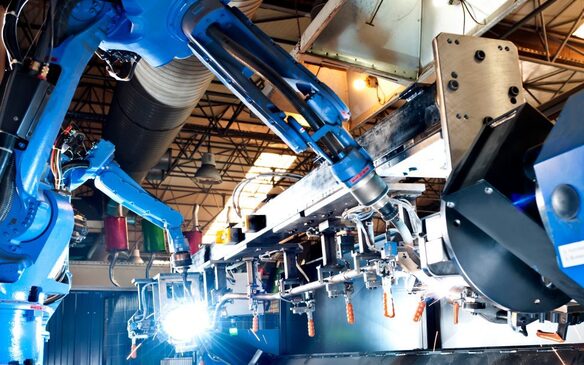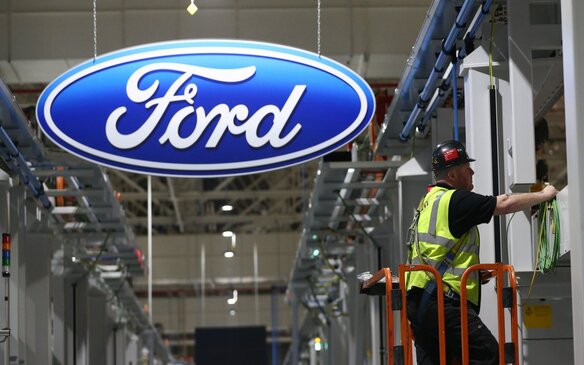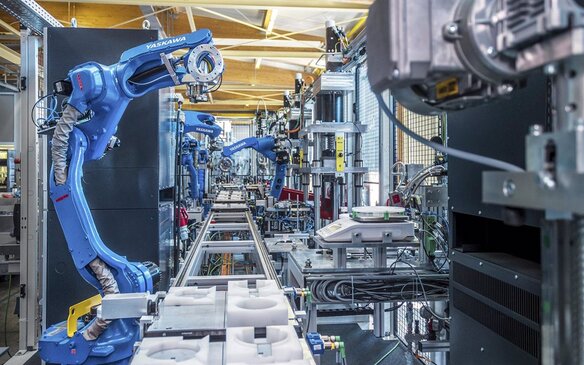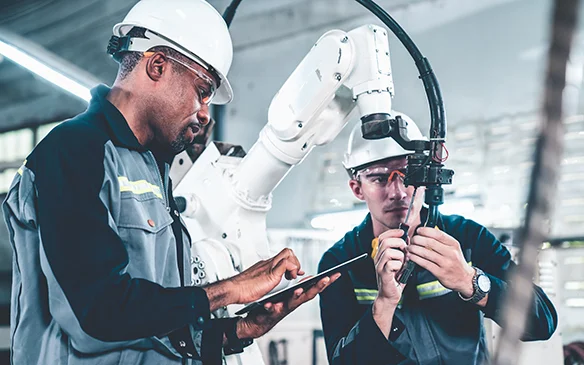
Ford: a fundamental role in the automotive sector
8 de enero de 2024
España entre los países europeos con mayor implantación de robots industriales
13 de febrero de 2024European industrial robots are on the rise: in 2022 there were 72,000 units installed in the 27 member states of the European Union (EU), which corresponds to a growth of 6% annually. This is the first result published by the International Federation of Robotics (IFR).
«The top five countries are Germany, Italy, France, Spain and Poland,» said Marina Bill, president of the International Federation of Robotics (IFR), adding: «They represent 70% of the EU industry».
Germany leads the robot market in Europe: around 26,000 units were installed in 2022 alone (37% of all EU installations). Globally, it ranks as the fourth largest robot producing country, behind Japan, Singapore and South Korea. The automobile industry is the main consumer of industrial robots in this country.
Italy is the second largest robot market in Europe. Here, the global metal machinery industry is strong: sales volume in 2022 reached 3,700 units, an increase of 18% over last year. Sales of robots in the metal, chemical and plastic industries considerably increased their installed units. The country’s food and beverage industry is also strong, however, demand from the automotive industry fell 22%. The unit is managed by the Stellantis Group, formed from the merger of Fiat Chrysler and the French Peugeot Citroën.
France‘s robot market will be the third largest in Europe, with installations increasing by 15% annually. The main client is the steel industry, with a market share of 22%. The automobile industry grew by 19% to 1,600 vehicles. This represents a market share of 21%. The French government has announced a €100 billion incentive package for the purchase of smart industrial equipment in 2021. Demand for industrial robots will increase in the coming years.
For its part, Spain occupies fifth place with a growth of 12%, totaling 3,800 units. The placement of robots is dictated by the automotive industry. Spain is the second largest automobile manufacturer in Europe after Germany, according to the International Organization of Automobile Manufacturers (OICA). The Spanish automobile industry sold 900 vehicles, 5% more. Sales in the steel industry increased by 20%, reaching 900 units. By 2022, the mechanical steel industry will account for almost 50% of robot installations.
The integration of robots in Poland would have been in full swing for nine years. In 2022, demand in the metallurgical and engineering industry grew by 17%. Demand in the automotive industry is almost 500 units, a year-on-year decrease of 37%. The civil war in Ukraine has weakened the manufacturing industry. But innovative companies and digital technologies will benefit from €160 billion of EU financial support between 2021 and 2027.
European countries, including non-EU countries, have reached a total of 84,000 installed robot units, representing a growth of 3% in 2022.




